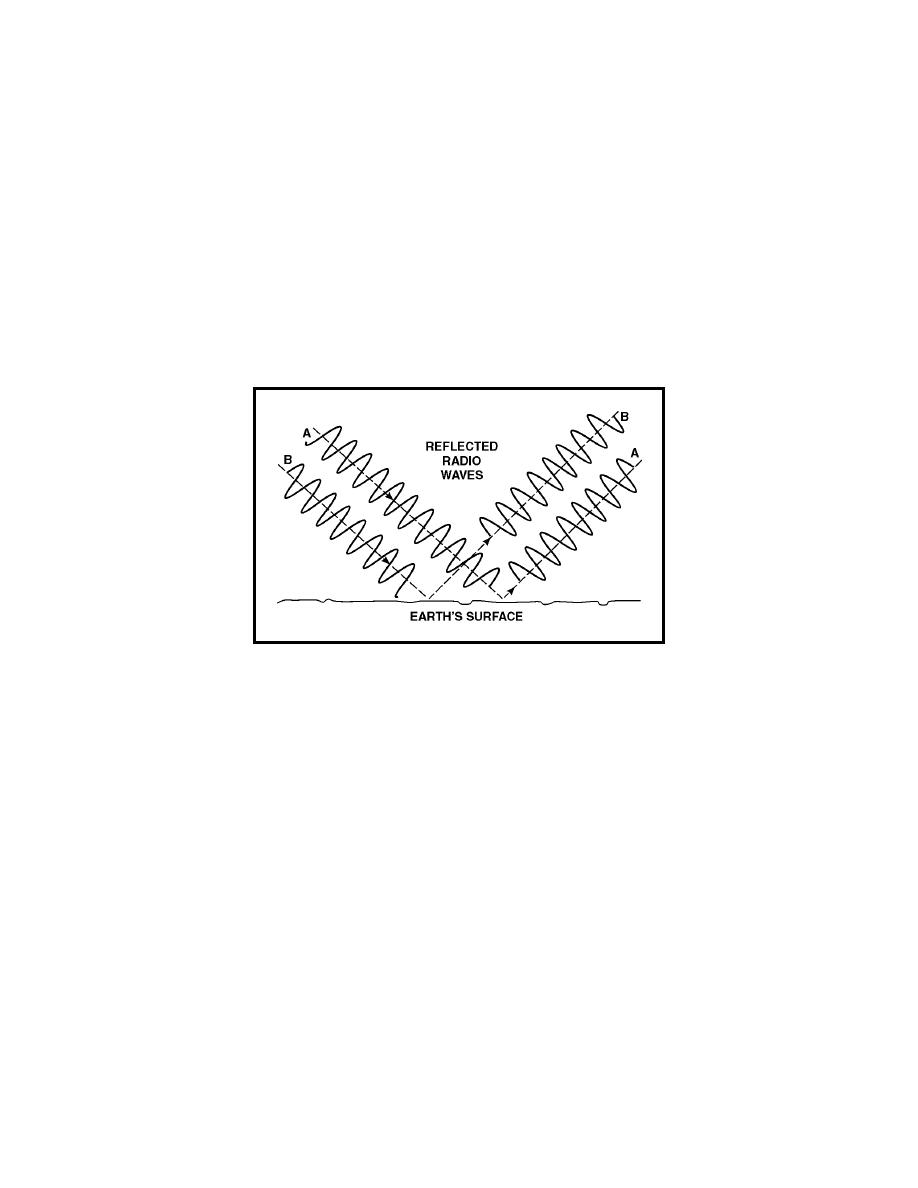
TC 9-64 _________________________________________________________________________
2-40. When radio waves are reflected from flat surfaces, a phase shift in the
alternations of the wave occurs. Figure 2-7 shows two radio waves being
reflected from the earth's surface. Notice that the positive and negative
alternations of radio waves (A) and (B) are in phase with each other in their
paths toward the earth's surface. After reflection takes place, however, the
waves are approximately 180 degrees out of phase. The amount of phase shift
that occurs is not constant. It depends on the polarization of the wave and the
angle at which the wave strikes the reflecting surface. Radio waves that keep
their phase relationships after reflection normally produce a stronger signal
at the receiving site. Those that are received out of phase produce a weak or
fading signal. The shifting in the phase relationships of reflected radio waves
is one of the major reasons for fading. Fading is discussed in more detail later
in this chapter.
Figure 2-7. Phase Shift of Reflected Radio Waves
2-41. Another phenomenon common to most radio waves is the bending of the
waves as they move from one medium into another in which the velocity of
propagation is different. This bending of the waves is called refraction. For
example, suppose you are driving down a smoothly paved road at a constant
speed and suddenly one wheel goes off onto the soft shoulder. The car tends
to veer off to one side. The change of medium, from hard surface to soft
shoulder, causes a change in speed or velocity. The tendency is for the car to
change direction. This same principle applies to radio waves as changes occur
in the medium through which they are passing. As an example, the radio
wave shown in figure 2-8 is traveling through the earth's atmosphere at a
constant speed. As the wave enters the dense layer of electrically charged
ions, the part of the wave that enters the new medium first travels faster
than the parts of the wave that have not yet entered the new medium. This
abrupt increase in velocity of the upper part of the wave causes the wave to
bend back toward the earth. This bending, or change of direction, is always
toward the medium that has the lower velocity of propagation.
2-12


 Previous Page
Previous Page
